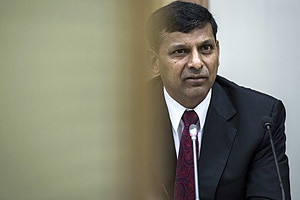During the final week of 2014, the Indian rupee closed around 63.30 against the US dollar. Rupee benefitted from year end hedging from the exporters as well as positive dose of PMI data for December. In December, manufacturing PMI rose to 24 month of high 54.5 from 53.3 in the prior month. Acceleration in new orders from domestic as well as export markets and strong pick up in output took the PMI higher. Inflation pressures remain subdued and so did hiring. At the same time core sector growth came in stronger for November at 6.7% y/y. This index captures output in eight industries – coal, electricity, crude oil, natural gas, steel, cement, fertilizers, and refinery products. It has a 38% weight in the index of industrial production.
It has been a comeback year for the Indian rupee. After being ravaged by the twin forces of emerging markets (EM) deleveraging and domestic headwinds in 2013, in 2014, rupee bounced back, thanks to a stable political mandate and remarkably smart central banking by Governor Raghuram Rajan. Benchmarking major currencies against the US dollar, we find that the Indian rupee has been ranked as one of the best performers in 2014. On an absolute basis, though the Indian rupee has depreciated against the US dollar, by nearly 2%, but when compared with its peers our local unit has appreciated quite a bit.
For an emerging market currency like the rupee, responsible monetary and fiscal policy play the central role in deciding how stable the currency will be. In that regard, we have seen a welcome departure in the way monetary policy is conducted by the Reserve Bank of India. In its history, though RBI in general has always been vocal about controlling inflation but it’s only under the new leadership of Dr Raghuram Rajan, that the central bank has preached and practiced the virtues of monetary stability and financial stability for the rupee. Dr Raghuram Rajan has advocated the need for compensating savers of capital for the inflation in the economy or in other words keeping the interest high enough to warrant real rate of return to the saver. We believe, that as Indian rupee is a market driven floating paper currency, it lacks an anchor that one finds in a currency backed by gold. Therefore, for the value of rupee to be remain stable it is important that the central bank, along with the government, pursue policies that is not overly inflationary. Post-Independence, India’s economic history is chequered with long phases of highly inflationary monetary and fiscal policies. Hence it is no surprise that over the last 7 decades, rupee has lost over 90% of its value against two major global currencies, the US dollar and gold.

Globally, we are seeing an interesting interplay of financial asset inflation and hard asset deflation. Over the last one year, we have written and talked at length about the above phenomenon. It was in 2011/2012 we first noticed the shift in trend between financial assets and hard assets. World had become used to seeing a synchronized boom in both. Between 2000 and 2011/12, global growth was more or less in sync between developed economies and emerging economies. A development boom in emerging markets triggered a massive price increase in commodities and real estate. The shift away from the US dollar towards EM currencies, Euro and others also helped in fuelling the hard asset boom. Financial assets too rose as the leverage in financial system increased and corporates benefitted from the economic prosperity. Gold, a global currency, which competes for supremacy against the US dollar, shined, as prices zoomed.
[polldaddy poll=8558087]
India has benefitted immensely from this divergent trend in global asset markets. A strong US dollar and global economic slowdown, which has triggered a deflation in the real estate prices and commodity prices has kept our cost of operations lower. At the same time, financial asset boom has ensured steady flow of capital into the domestic debt and equity markets. Stepping into 2015, we see this divergent cycle continue. However, there will be winners and losers of this kind of an asset play. Globally, commodity producing countries are feeling the pain and hence we can expect a slowdown of money flow from those destinations into the global financial markets. At the same time, back home in India, a deflation in the commodity prices and a bearish reversal in real estate boom can take a toll on rural income and hence rural consumption. There can be adverse impact of the hard asset deflation on the global and domestic financial sector; we need to keep a watch on that.
Over the first week of New Year, we can see volumes pick up as traders returns from the yearend holidays. At the same time, global economic docket will be full with PMI surveys from major economies, US and UK industrial output, German and US employment report and retails sales data from Euro zone nations. Overall the bias remains positive for US dollar against major global currencies and that can keep the rupee ranged against it. The key technical level remains 63.00 levels, as long as that holds, we can expect a range of 63.00 and 64.00 on spot. However, on a sustained dip below 63.00 it can fall towards 62.30/60 levels. However, on medium to long term basis, upside in rupee remains limited around 62.00/62.50 levels on spot and hence we would continue to urge importers/short term FCY borrowers to lock in hedges on decline below 63.00 levels on spot. Over the medium term the risk of move towards 65.00/66.00 remains.
By Anindya Banerjee, analyst, Kotak Securities

